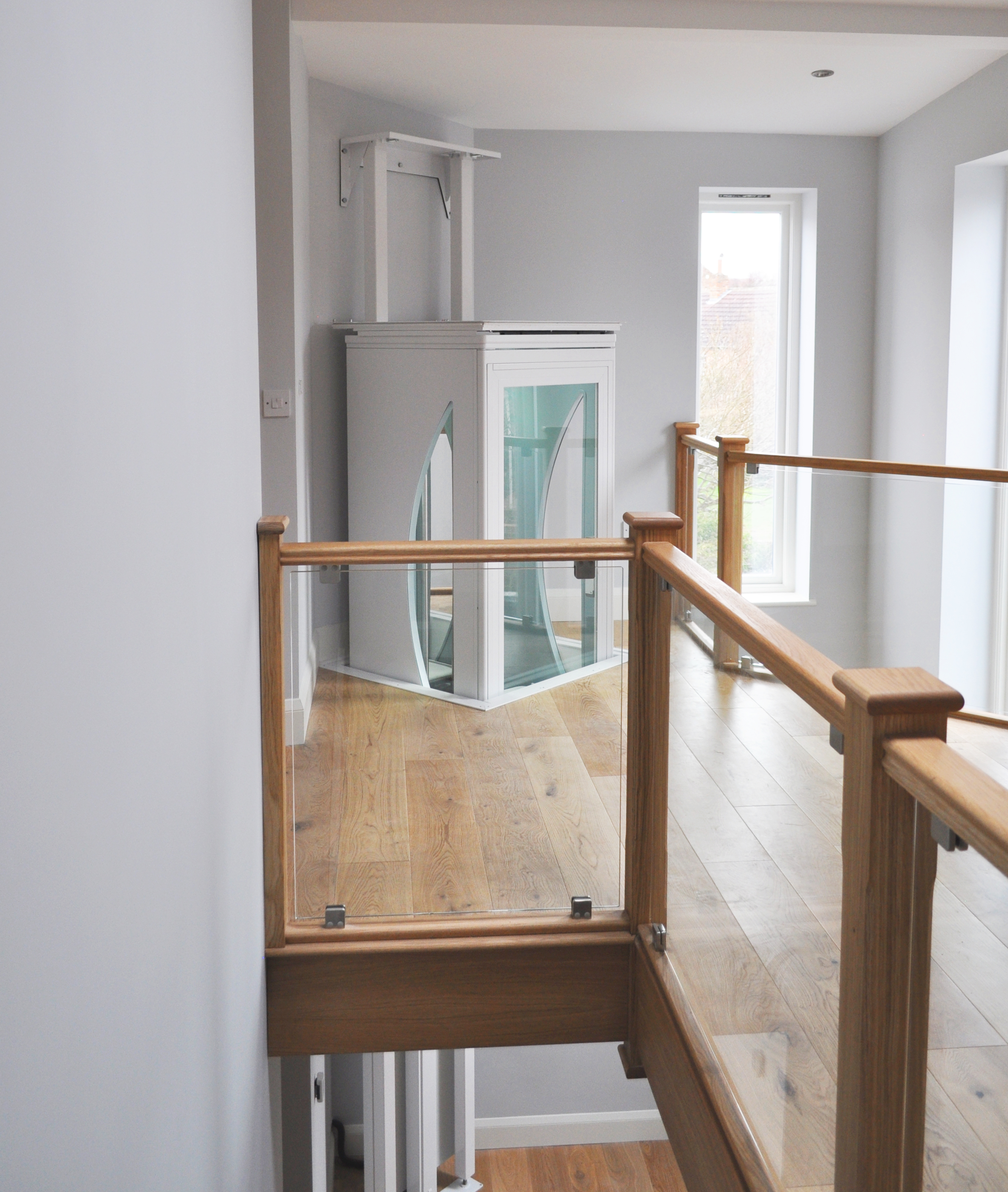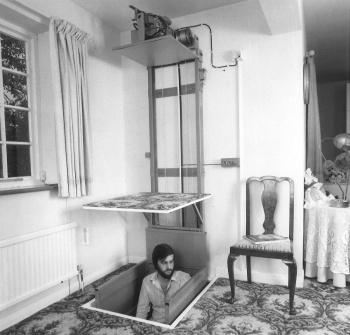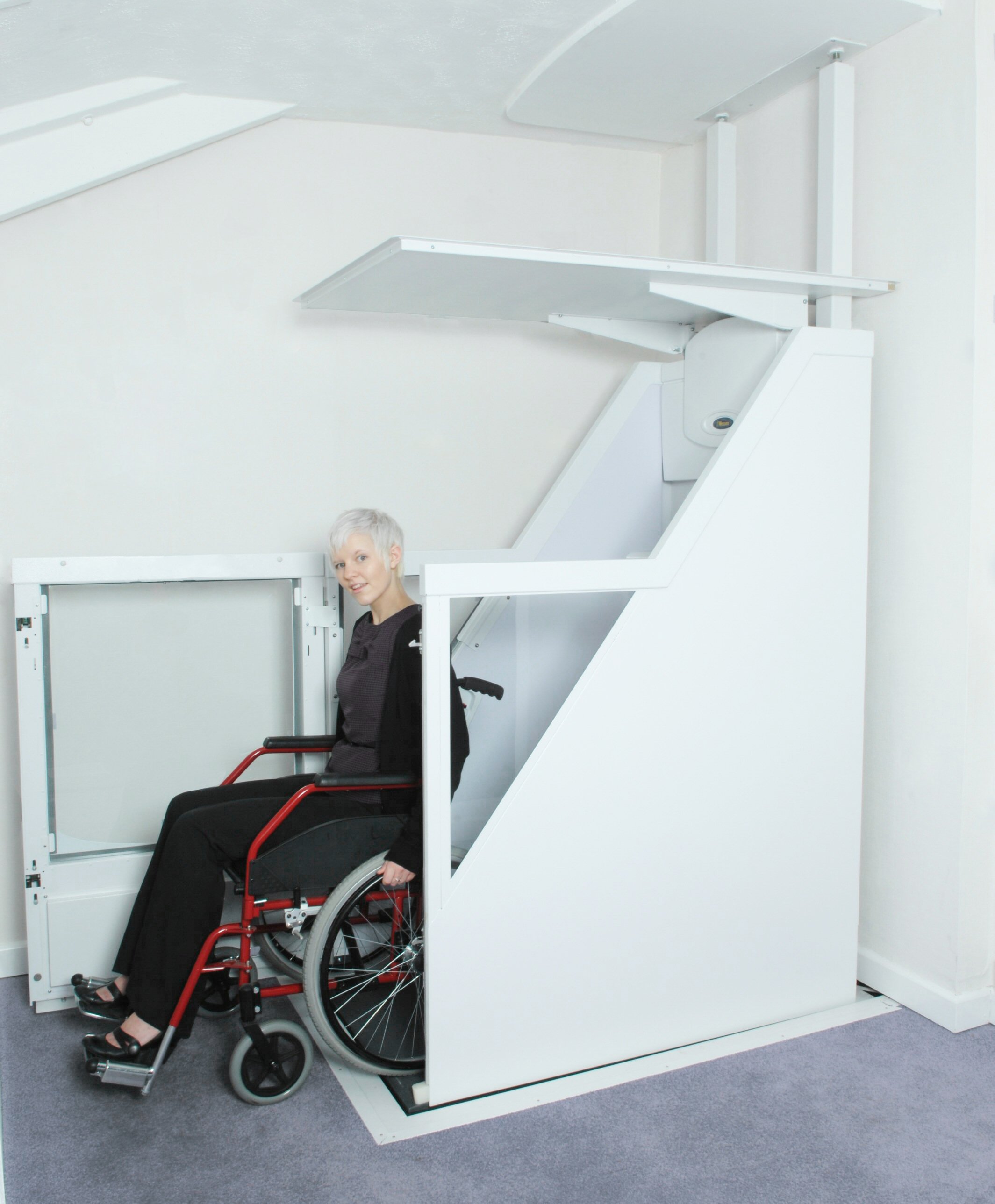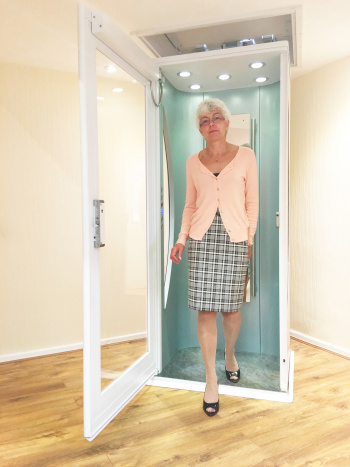Through-Floor Lifts
Contents |
[edit] Introduction
Through-Floor Lifts (sometimes Through Floor Lifts not hyphenated, Through Floor Home Lifts or simply Home Lifts) are a type of domestic home lift whose design lends itself to home living. Simple in design, they consist of a lift car, a track and an aperture cut into the ceiling on the lower floor, or the floor on the upper floor.
[edit] Early Through-Floor Lifts
Some of the first through-floor lifts were developed in the mid 1900's. They were very different from the one's we have today, not having any of the safety features that standards like BS 5900 have now introduced.
However, the mechanisms and basic function of these early lifts are the same as today.
[edit] Through-Floor Lifts Today
There are a wide range of manufacturers who produce through-floor lifts. They have always been known as through-floor lifts to people who work with them (such as Occupational Therapists and those in the industry), but are now more commonly simply included in the umbrella of 'home lifts'.
Historically, through-floor lifts were used predominantly by wheelchair users, but have more recently been taking on the stair lift market, as smaller through-floor lifts (or standing through-floor lifts) are produced.
[edit] Smaller Through-Floor Lifts
Often sold as the 'Stairlift Alternative', smaller through-floor lifts are characterised by a footprint small enough to have minimal impact on the home living space. Many other benefits are often mentioned;
- Quick and easy to install.
- Keeps the staircase free of stairlift obstruction.
- Minimal building work required.
[edit] Large Through-Floor Lifts
Generally produced to meet the demand of heavier wheelchairs or to accommodate multiple passengers, these through-floor lifts can reach dimensions of up to 2m sq.
[edit] Related articles on Designing Buildings Wiki
- A brief history of lifts over the years.
- Considerations When Installing a Residential Lift.
- Disabled access lifts.
- Hoists.
- Home lifts.
- Lifting device.
- Lifting platform.
- Lift Standards: EN 81-20 and EN 81-50.
- Lifts.
- Lift shaft.
- Liftway.
- Low pit lifts.
- The science of lifts.
- The world's fastest lifts.
- Wheelchair platform stairlifts.
Featured articles and news
Latest Build UK Building Safety Regime explainer published
Key elements in one short, now updated document.
UKGBC launch the UK Climate Resilience Roadmap
First guidance of its kind on direct climate impacts for the built environment and how it can adapt.
CLC Health, Safety and Wellbeing Strategy 2025
Launched by the Minister for Industry to look at fatalities on site, improving mental health and other issues.
One of the most impressive Victorian architects. Book review.
Common Assessment Standard now with building safety
New CAS update now includes mandatory building safety questions.
RTPI leader to become new CIOB Chief Executive Officer
Dr Victoria Hills MRTPI, FICE to take over after Caroline Gumble’s departure.
Social and affordable housing, a long term plan for delivery
The “Delivering a Decade of Renewal for Social and Affordable Housing” strategy sets out future path.
A change to adoptive architecture
Effects of global weather warming on architectural detailing, material choice and human interaction.
The proposed publicly owned and backed subsidiary of Homes England, to facilitate new homes.
How big is the problem and what can we do to mitigate the effects?
Overheating guidance and tools for building designers
A number of cool guides to help with the heat.
The UK's Modern Industrial Strategy: A 10 year plan
Previous consultation criticism, current key elements and general support with some persisting reservations.
Building Safety Regulator reforms
New roles, new staff and a new fast track service pave the way for a single construction regulator.
Architectural Technologist CPDs and Communications
CIAT CPD… and how you can do it!
Cooling centres and cool spaces
Managing extreme heat in cities by directing the public to places for heat stress relief and water sources.
Winter gardens: A brief history and warm variations
Extending the season with glass in different forms and terms.
Restoring Great Yarmouth's Winter Gardens
Transforming one of the least sustainable constructions imaginable.


























